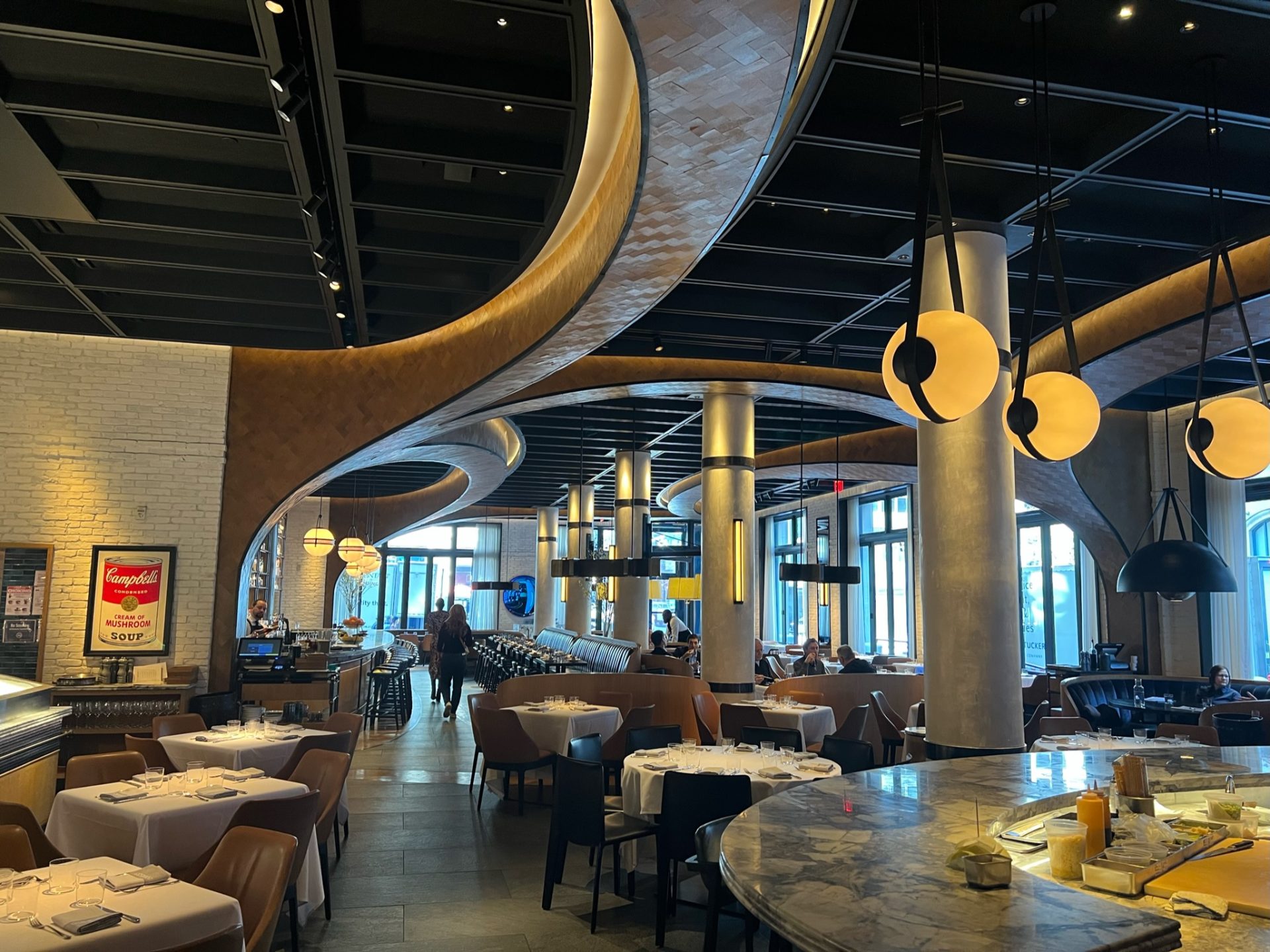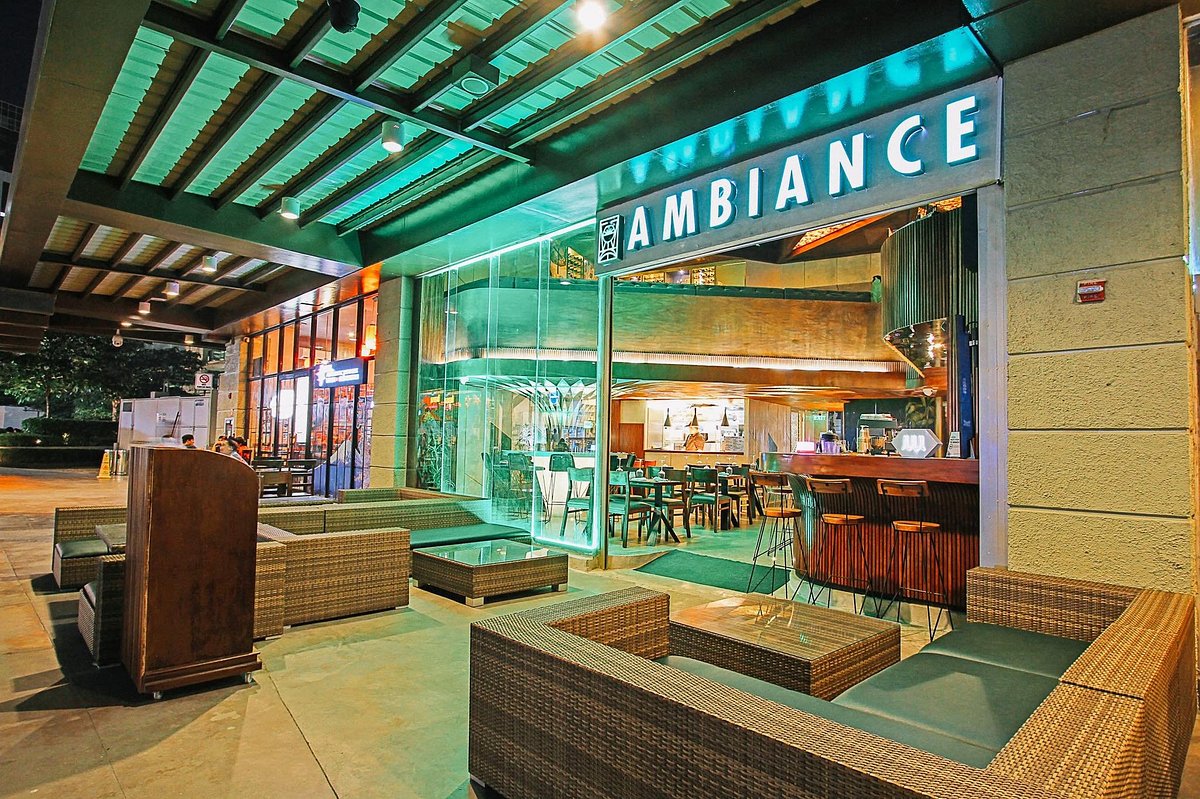Pan Asian Dining Islamabad: Relish Genuine Asian Meals
Pan Asian Dining Islamabad: Relish Genuine Asian Meals
Blog Article
Savor Genuine Asian Cuisine With a Pan-Asian Spin for a Culinary Journey
Embarking on a cooking journey with authentic Oriental cuisine, improved with a Pan-Asian twist, uses a distinct opportunity to explore the abundant tapestry of flavors that define the area's varied cooking practices. As you consider these attracting meals, take into consideration the cultural stories and historical impacts that form them, each bite using a story waiting to be uncovered. asian restaurant isb.

Checking Out Pan-Asian Tastes
In the realm of international gastronomy, Pan-Asian food sticks out for its amazing diversity and the harmonious interaction of flavors from different Oriental societies. This cooking method celebrates the unique ingredients and rich practices discovered across the continent, developing a tapestry of preferences that is both interesting and rewarding. Key to Pan-Asian cuisine is its capability to stabilize contrasting tastes-- pleasant, salted, spicy, and sour-- while highlighting the freshness and top quality of each active ingredient.
From the umami-rich soy sauce of Japan to the intense chili peppers of Thailand, Pan-Asian cuisine offers a substantial combination of tastes. These components are usually integrated in creative means, enhancing dishes with layers of intricacy. For circumstances, the usage of great smelling herbs such as lemongrass and cilantro, typical in Vietnamese and Thai food, adds a refreshing brightness to dishes, while the incorporation of coconut milk delivers a luscious, abundant appearance.
The focus on fresh fruit and vegetables and fragrant spices makes sure that each dish is not just a feast for the taste however additionally for the detects. Pan-Asian food invites diners to begin on a cooking trip, checking out the huge and varied landscapes of Eastern gastronomy with every bite.
Combination Meals to Attempt
While Pan-Asian cuisine is celebrated for its conventional flavors, the contemporary cooking landscape is increasingly welcoming combination dishes that blend these classic aspects with impacts from various other areas. This innovative strategy not just honors the rich heritage of Asian cooking arts but also presents novel taste experiences that interest contemporary palates.
A prime example of such a combination recipe is the Korean-Mexican taco, where seasoned bulgogi beef is covered in a warm tortilla, topped with kimchi and a zesty gochujang-infused salsa. This mix marries the vibrant, full-flavored flavors of Korea with the vibrant, fresh components of Mexican food. In a similar way, sushi burritos have actually gotten popularity, amalgamating the fragile virtuosity of Japanese sushi with the passionate, hand-held comfort of a burrito, typically featuring blend active ingredients like tempura shrimp and avocado with a drizzle of wasabi mayo.
One more notable recipe is Thai curry ramen, which infuses the creamy, fragrant flavors of Thai curry into the comforting brew of traditional Japanese ramen, producing a harmonious blend that tantalizes the detects. These fusion meals extend beyond plain uniqueness; they stand for a culinary dialogue in between cultures, urging exploration and technology in the globe of Pan-Asian food.
Necessary Components and Seasonings
To absolutely value Pan-Asian cuisine, one need to comprehend the crucial active ingredients and flavors that create its foundation. This diverse culinary style attracts from an abundant tapestry of Asian customs, utilizing an unified mix of structures and flavors. Secret components consist of soy sauce, fish sauce, and oyster sauce, which give a tasty umami deepness necessary to Eastern dishes. Corresponding to these are rice vinegar and mirin, lending a delicate level of acidity and sweet taste.
Aromatic components are pivotal, with lemongrass, ginger, and garlic being common throughout various Pan-Asian recipes. These components give an aromatic base that boosts the intricacy of flavors. Seasonings such as celebrity anise, cardamom, and cinnamon introduce warmth and character, resembling influences from areas like China and India.

Cooking Strategies and Tips
Understanding the art of Pan-Asian food calls for knowledge with its unique food preparation methods, each contributing to the lively tapestry of tastes this culinary custom is commemorated for. Central to these techniques is the stir-fry, a rapid cooking technique that maintains the nutritional honesty and vivid shades of ingredients. Making use of a wok, the stir-fry technique permits for even warmth circulation, vital for accomplishing the characteristic texture and flavor balance of Pan-Asian recipes.
One more essential strategy is steaming, specifically common in Chinese cuisine. This mild approach preserves the natural flavors and nutrients of ingredients, making it suitable for fish and shellfish and vegetables. Dumplings, a beloved staple, typically gain from steaming, leading to soft, delicious textures.
Cooking, also important, imparts great smoky midsts to recipes such as Korean bulgogi or Japanese yakitori (best asian restaurant tomo sushi Islamabad). This technique typically involves seasoning active ingredients, permitting tastes to penetrate deeply before cooking over an open flame or warm plate
Last but not least, grasping the art of stabilizing flavors-- pleasant, sour, salty, bitter, and umami-- is crucial. Properly layering these aspects can boost a recipe from ordinary to extraordinary, providing a their explanation complex and pleasing culinary experience that personifies the essence of Pan-Asian food.
Eating Experiences Worldwide
Across the world, Pan-Asian food provides an exceptional eating experience, celebrated for its rich tapestry of tastes and dynamic discussions. This cooking sensation has transcended social limits, capturing the hearts and tastes buds of food fanatics worldwide. In multicultural cities fresh York, London, and Sydney, Pan-Asian restaurants work as melting pots where cooking practices from Thailand, Japan, China, and beyond assemble, offering restaurants with an eclectic mix of recipes that highlight the region's diversity.
The global allure of Pan-Asian food hinges on its capability to use both authenticity and innovation. Cooks skillfully marry conventional ingredients such as lemongrass, soy sauce, and miso with contemporary strategies, resulting in dishes that are both refreshingly brand-new and acquainted. This blend allows diners to start a culinary trip that respects heritage while welcoming modernity.
Furthermore, dining experiences are elevated with attentively developed settings that reflect the ethos of Pan-Asian looks. From minimalist Japanese-inspired interiors to lively Thai-themed areas, each restaurant supplies a special atmosphere that matches the culinary offerings. As a result, patrons are not merely consuming a meal yet partaking in a social experience, making Pan-Asian eating a truly worldwide sensation.
Conclusion
The exploration of Pan-Asian food provides an extensive understanding of the elaborate interplay of tastes and culinary practices throughout Asia. By welcoming combination recipes such as Thai curry ramen and sushi burritos, the cooking trip not only highlights the adaptability of standard active ingredients yet likewise showcases innovative modern-day techniques. This gastronomic experience, improved by necessary flavors and cooking techniques, offers a distinct possibility to value the cultural diversity and culinary creativity that define Pan-Asian cuisine on a global scale.
Embarking on a learn this here now culinary trip through authentic Oriental food, boosted with a Pan-Asian spin, uses a distinct chance to explore the abundant tapestry of flavors that specify the region's diverse cooking customs.In the world of global gastronomy, Pan-Asian cuisine stands out for its exceptional variety and the harmonious interaction of flavors from different Eastern cultures. Key to Pan-Asian cuisine is its ability to stabilize contrasting flavors-- wonderful, salted, spicy, and sour-- while highlighting the freshness and top quality of each active ingredient.

Report this page